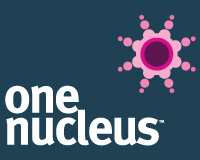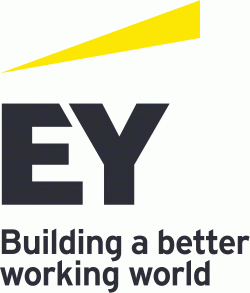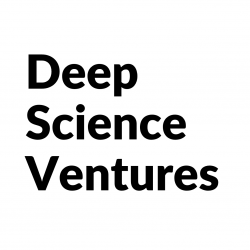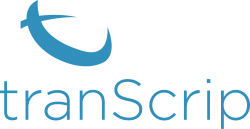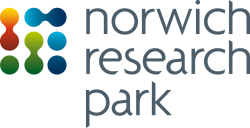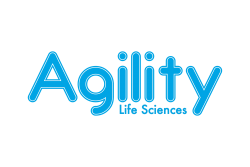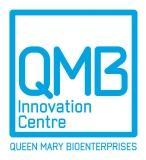Having recently attended the London Stem Cell Conference, Oliver Herd, a trainee patent attorney at IP law firm Appleyard Lees IP LLP, reflects on some of the current activity in the stem cell field and how products, methods and consumables can be protected in Europe.
On 27 June 2023, Magdalena Zernicka-Goetz was awarded the Ogawa-Yamanaka Stem Cell prize for her work in determining the mechanisms that drive mammalian embryo development through the creation of in vitro 3D models. These models, which develop brain structures and a beating heart, appeared in Nature’s list of “Seven technologies to watch in 2023.”
Magdalena’s recent work, involving culturing and studying human embryo models in vitro until day 14, resembles the natural embryo as gastrulation begins and are important in understanding early pregnancy, which can help in understanding why approximately 60% of human pregnancies fail before or after implantation.
Aside from their use in research, stem cells are used in cellular therapy such as regenerative and infective medicine, for use in drug testing, and the food industry, where lab grown meat has been hailed as a potential green answer to the meat production industry and its negative environmental consequences. Accordingly, the global stem cells market was valued at $13.3 billion in 2022 and expected to expand at a rate of 9.74% from 2023 to 2030 (Grand view research).
Stem cells are undifferentiated cells, which are characterised by their dual ability to divide to produce differentiated cells with effector functions, and to self-renew, that is, to produce more of the same undifferentiated stem cell. They are therefore a continuous source of differentiated cells that maintain biological organisms throughout life. The use of stem cells in therapy therefore plays a central role in regenerative medicine, which aims to repair or replace damaged or diseased human cells or tissues to restore normal function.
There are two major types of stem cells: pluripotent stem cells and adult stem cells. Pluripotent stem cells include embryonic stem cells and induced pluripotent stem cells (iPSCs), which have the ability to produce all cells of the human body in vivo. Adult stem cells have a more restricted in differentiation potential (i.e., are multipotent as opposed to pluripotent) and are found in small numbers in specialised locations around the body.
Recapitulating the in vivo stem cell environment in vitro
One of the challenges of working with stem cells is that their stemness and differentiation potential can be altered, or lost, when removed from their in vivo environment and studied in vitro. This is because their local environment in vivo is highly complex (e.g., relying on complex cell-cell interactions, cytokine gradients, oxygen levels), which can be difficult to replicate in vitro. Umber Cheema spoke at the London Stem Cell Conference about her research, exploring how alterations in the biophysical microenvironment (such as matrix stiffness) can alter cell fate. Her group found that matrix stiffness and oxygen tension alone (i.e., in the absence of changes in cytokine conditions) was enough to alter the potency of adipose derived mesenchymal stem cells. Similarly, Dominic Scaglioni found that seeding human iPSC derived cardiac progenitors onto a 3D bioprinted tubular scaffold creates a better organisation of specialised cells far more similar to in vivo conditions. In contrast, when cells were seeded into a standard 2D culture dish the organisation was lost.
Consumables, supports and apparatuses “suitable for” use with stem cells (including human embryonic stem cells) are not excluded, per se, from patentability (see embryonic stem cells below) even when they are “specifically designed” for this purpose (EPO Guidelines for Examination). For example, StemCell Technologies have 16 granted and 10 pending European Patent (EPs) applications towards methods/apparatuses/kits for the separation of cells as well as methods and products for using in cell culture. Corning, the producer of Matrigel, a solubilised basement matrix popular for the use in embryonic stem cell culture has 7 granted and 12 pending EP patents in the consumables and cell culture apparatus space.
Embryonic stem cells
Embryonic stem cells are derived from embryos, and therefore require prior destruction of embryos for their base material. In Europe, the industrial or commercial exploitation of human embryos is prohibited (Rule 28a EPC), which would also run afoul of Article 53a EPC which prohibits the patenting of inventions which would be contrary to “ordre public” or morality. This means that whilst available as research tools in very specific circumstances, like the focus of the Zernicka-Goetz lab in studying early human development, protection for their commercial use is prohibited. This is regardless of whether the patent claims the step of the de novo destruction of the embryo as part of the methodology, or whether the derived product necessarily involved their destruction (G 0002/06). T 2221/10 clarified that this exclusion covers the use of established human embryonic stem cell lines as these were initially derived by a process destroying human embryos. However, as set out in T 0385/14 which related to an assay for drug discovery based on in vitro differentiated cells, objections under Article 53(a) EPC and Rule 28(1)(c) EPC cannot be raised if its technical teaching can be put into practice using human embryonic stem cells derived from parthenogenetically activated human oocytes (which do not involve the destruction of human embryos).
In addition, the insertion of Recital 42 of the EU Directive 98/44/EC ( which the EPC contracting states incorporated as a supplementary means of interpretation) indicates that an exception to these prohibitions exist where it can be established that the invention serves a therapeutic or diagnostic purpose for the used embryo. This usefulness presupposes that the used embryo is still in existence, and is not irreversibly destroyed. One example of this is EP2726865B1 (where Magdalena Zernicka-Goetz is listed as an inventor), which is directed to methods of predicting mammalian embryo viability, which the description specifies could improve the prospects of IVF treatment.
Of course, methods using embryonic stem cells from animal sources (such as in the alternative meat industry) are not subject to patenting exclusions.
Induced pluripotent stem cells
Rocio Sancho spoke about the use of human iPSC models in his lab to determine the importance of the USP7-NGN3 axis in the generation of pancreatic beta cells which may have a potential use for diabetes therapy. iPSCs are a type of artificial pluripotent stem cell first produced by Shinya Yamanaka and Kazutoshi Takahashi in 2006 which are produced by introducing four genes into differentiated cells (which work together to “dedifferentiate” them back to the pluripotent state). iPSCs can then be differentiated into cells of choice, using specific differentiation strategies. This means that personalised, patient specific iPSCs can be generated, and dedifferentiated into cells of choice for use in regenerative therapy. The potential for the iPSC industry is reflected in its compound annual growth rate of almost 20% from 2023 to 2030, making it the fastest growing stem cell industry (Grand view research).
Kyoto University (where Yamanaka and Takahashi are both professors) is one of the most prolific applicants in the iPSC field, with 33 EP granted and 14 pending patents which include methods for establishing and using (e.g. differentiating and screening) iPSCs.
Adult stem cells
Adult stem cells are multipotent stem cells existing in prenatal, fetal and adult tissues. Examples include mesenchymal stem cells (found predominantly in the adipose tissue and bone marrow and able to produce bone, fat and cartilage) and haematopoietic stem cells (found predominantly in the bone marrow and able to produce all blood cells). Adult stem cells hold the largest share of the stem cell market (83.84% in 2022). This is largely due to their popularity in cellular therapy where they are perceived as safe (the use of iPSCs for example in cellular therapy is associated with tumorigenicity potential). Globally, there are currently 441 approved or active trials using mesenchymal stem cells and 1602 approved or active trials using haematopoietic stem cells. As expected, there is a large amount of patent filing involving adult stem cells, with almost 2000 pending or granted EP patents listed relating to mesenchymal stem cells and over 1500 pending or granted EP patents listed relating to haematopoietic stem cells. For example, recent applications relating to mesenchymal stem cells include their use in treatment for a specific disease (alone or in combination with a drug) and differentiation methods (e.g. for use in research or in the cultured meat industry). In addition to their stem like properties, mesenchymal stem cells are known for their immunoregulation of other cell types, which they achieve through secretion of anti-inflammatory molecules. Accordingly, their secreted molecules, media containing the secreted molecules (conditioned media) and exosomes (secreted vesicles containing the molecules) are further uses of mesenchymal stem cells popular for patent protection in Europe.
Summary
In summary, the use of stem cells in areas such as medicine, research, drug discovery and alternative meats is a valuable and growing area, reflected in the numbers and scope of patents filed and granted. Whilst restrictions on the patentability of human embryonic stem cells remain, alternatives such as the use of iPSCs and adult stem cells are driving the market forward.
Biotechnology companies specialising in the provision of methods and products enabling the support of the industry remains a hugely profitable area, including culturing conditions (such as media, supplements, culturing apparatus, bioprinting scaffholds), differentiation (and dedifferentiation) methods and consumables, and infrastructure to store and expand stem cells. Finally, it is important to note that patents are territorial, and different patentability requirements exist for different territories. Whilst this article is focused on the patentability of stem cells in Europe, scope of protection is likely to be different in other territories, such as the US.
Oliver Herd - Trainee Patent Attorney, Cambridge, Appleyard Lees IP LLP
oliver.herd@appleyardlees.com
